Related Research Articles

A musical ensemble, also known as a music group or musical group, is a group of people who perform instrumental and/or vocal music, with the ensemble typically known by a distinct name. Some music ensembles consist solely of instrumentalists, such as the jazz quartet or the orchestra. Other music ensembles consist solely of singers, such as choirs and doo wop groups. In both popular music and classical music, there are ensembles in which both instrumentalists and singers perform, such as the rock band or the Baroque chamber group for basso continuo and one or more singers. In classical music, trios or quartets either blend the sounds of musical instrument families or group together instruments from the same instrument family, such as string ensembles or wind ensembles. Some ensembles blend the sounds of a variety of instrument families, such as the orchestra, which uses a string section, brass instruments, woodwinds and percussion instruments, or the concert band, which uses brass, woodwinds and percussion.

A percussion instrument is a musical instrument that is sounded by being struck or scraped by a beater including attached or enclosed beaters or rattles struck, scraped or rubbed by hand or struck against another similar instrument. Excluding zoomusicological instruments and the human voice, the percussion family is believed to include the oldest musical instruments. In spite of being a very common term to designate instruments, and to relate them to their players, the percussionists, percussion is not a systematic classificatory category of instruments, as described by the scientific field of organology. It is shown below that percussion instruments may belong to the organological classes of ideophone, membranophone, aerophone and cordophone.

Sheila Cecilia Escovedo, known under the stage name Sheila E., is an American percussionist and singer. She began her career in the mid-1970s as a percussionist for The George Duke Band. After separating from the group in 1983, Sheila began a solo career, starting with the release of her debut album in 1984, which included her biggest hit song, "The Glamorous Life". She also saw a hit with the single "A Love Bizarre". She is sometimes referred to as the "Queen of Percussion".
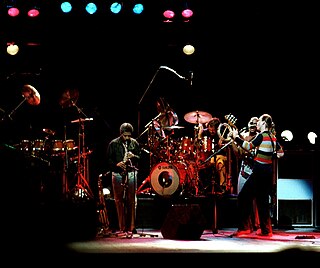
Weather Report was an American jazz fusion band active from 1970 to 1986. The band was founded in 1970 by Austrian keyboardist Joe Zawinul, American saxophonist Wayne Shorter, Czech bassist Miroslav Vitouš, American drummer Alphonse Mouzon as well as American percussionists Don Alias and Barbara Burton. The band was initially co-led by co-frontmen Joe Zawinul and Wayne Shorter but, subsequently as the 1970s progressed, Joe Zawinul largely became the sole musical leader of the group. Other prominent members at various points in the band's lifespan included Jaco Pastorius, Alphonso Johnson, Victor Bailey, Chester Thompson, Peter Erskine, Airto Moreira, and Alex Acuña. Throughout most of its existence, the band was a quintet consisting of Zawinul, Shorter, a bass guitarist, a drummer, and a percussionist.
Latin jazz is a genre of jazz with Latin American rhythms. The two main categories are Afro-Cuban jazz, rhythmically based on Cuban popular dance music, with a rhythm section employing ostinato patterns or a clave, and Afro-Brazilian jazz, which includes samba and bossa nova.

Callen Radcliffe Tjader Jr. was an American Latin Jazz musician, often described as the most successful non-Latino Latin musician. He explored other jazz idioms, especially small group modern jazz, even as he continued to perform music of Afro jazz, the Caribbean, México and Latin America.
Malo is an American musical group known for its blend of Latino, rock, jazz and blues. The San Francisco-based ensemble was led by Richard Bean, Arcelio Garcia, and Jorge Santana, the brother of Latin-rock guitarist Carlos Santana.

Dom Um Romão was a Brazilian jazz drummer and percussionist. Noted for his expressive stylings with the fusion band Weather Report, Romão also recorded with varied notable artists such as Cannonball Adderley, Paul Simon, Antonio Carlos Jobim, Jorge Ben, Sergio Mendes and Brasil '66, and Tony Bennett. He was the percussionist Tom Jobim brought to the studio for the album Jobim recorded with Frank Sinatra in 1967 for Reprise Records, Francis Albert Sinatra & Antônio Carlos Jobim.
Banda is a genre of Regional Mexican music and type of ensemble in which wind and percussion instruments are performed.

Armando Peraza was a Latin jazz percussionist and a member of the rock band Santana. Peraza played congas, bongos, and timbales.

William Correa, better known by his stage name Willie Bobo, was an American Latin jazz percussionist of Puerto Rican descent. Bobo rejected the stereotypical expectations of Latino music and was noted for combining elements of jazz, Latin and rhythm and blues music.
Laudir Soares de Oliveira was a Brazilian musician and producer mostly renowned for his time as percussionist with the band Chicago.
Joseph Thomas "Coke" Escovedo was an American percussionist, who came from a prominent musical family including five musician brothers and his niece, Sheila E. He played in various genres, including R&B, jazz fusion and soul, with bands including Santana, Malo, Cal Tjader, and Azteca.
John Anthony Pompeo, better known as Johnny Rae, was an American jazz drummer and vibraphonist.
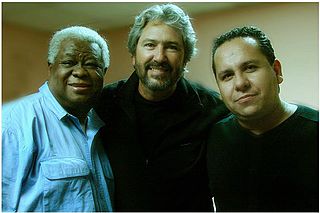
Luis Conte is a Cuban percussionist best-known for his performances in the bands of artists including James Taylor, Madonna, Pat Metheny Group, Eric Clapton, Carlos Santana, Phil Collins, Rod Stewart and Shakira. He began his music career as a studio musician for Latin Jazz acts like Caldera. Conte's live performance and touring career took off when he joined Madonna's touring band in the 1980s. Neil Strauss of The New York Times describes Conte's playing as "grazing Latin-style percussion".

Bobbye Jean Hall is an American percussionist who has recorded with a variety of rock, soul, blues and jazz artists, and has appeared on 20 songs that reached the top ten in the Billboard Hot 100.
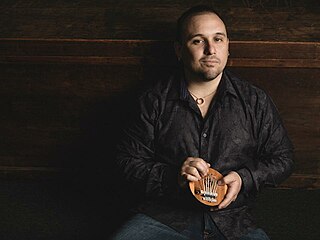
Arturo Stable is a Cuban master percussionist and composer. His diverse musical experience and unique sound have allowed him to work in many environments, but he is best known as a Latin jazz percussionist. He has performed in many famous jazz festivals around the world, such as the San Francisco Jazz Festival and the Vitoria-Gasteiz jazz festival, and has also played with some of the most notable jazz performers, including Paquito D'Rivera. Esperanza Spalding and David Sánchez,
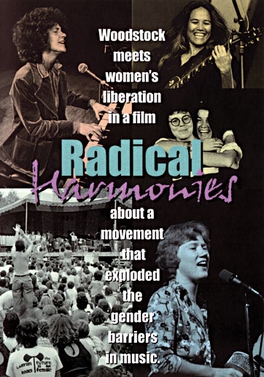
Radical Harmonies is a 2002 American independent documentary film directed and executive produced by Dee Mosbacher that presents a history of women's music, which has been defined as music by women, for women, and about women. The film was screened primarily at LGBTQ film festivals in 2003 and 2004.
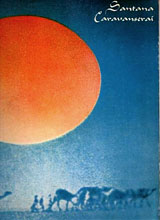
The Caravanserai Tour was a series of performances by American Latin rock band Santana in support of their album Caravanserai during 1972 and 1973. It started on September 4, 1972, at the Erie Canal Soda Pop Festival in Griffin, Indiana, and ended on October 21, 1973 at Ginasio Municipal Novo in Brasília, Brazil. This tour could be considered to be the group's most eclectic tour at this point, as the band did concerts at every continent except Africa and Antarctica, including one of the first, if not the first, tours of Latin America by a major American rock act.
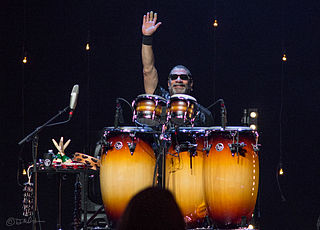
Lenny Castro is an American studio percussionist from the Los Angeles area.
References
- 1 2 Gaar, Gillian G. (2002). She's a Rebel: The History of Women in Rock & Roll. Seal Press. pp. 314–316. ISBN 9781580050784.
- ↑ Boaz, Chip (August 11, 2010). "Latin Jazz Conversations: Annette Aguilar (Part 1)". Latin Jazz Corner.
- 1 2 3 "Annette Aguilar". Women Drummers International. February 2012.
- ↑ Boaz, Chip (August 12, 2010). "Latin Jazz Conversations: Annette Aguilar (Part 2)". Latin Jazz Corner.
- ↑ Gourse, Leslie (1996). Madame Jazz: Contemporary Women Instrumentalists . Oxford University Press. p. 263. ISBN 9780195106473.
- ↑ Boaz, Chip (August 13, 2010). "Latin Jazz Conversations: Annette Aguilar (Part 3)". Latin Jazz Corner.
[Aguilar] pulled together a lot of those different worlds authentically in Stringbeans. It's a very different sound...
- ↑ Rogers, Travis (May 6, 2013). "Jazz Reviews: The Day Waits for Nobody". JazzTimes . Archived from the original on December 22, 2015. Retrieved December 19, 2015.
Annette has created a band of musicians and vocalists who make use of a vast arsenal of styles and virtuosities that transcend the expectations of the average listener of Latin and Brazilian Jazz.
- 1 2 "About Annette A. Aguilar & StringBeans". MTV.
- ↑ Armstrong, Lindsay (November 25, 2014). "Uptown Celebrates First Women in Latin Jazz Festival". DNAinfo. Archived from the original on December 22, 2015.